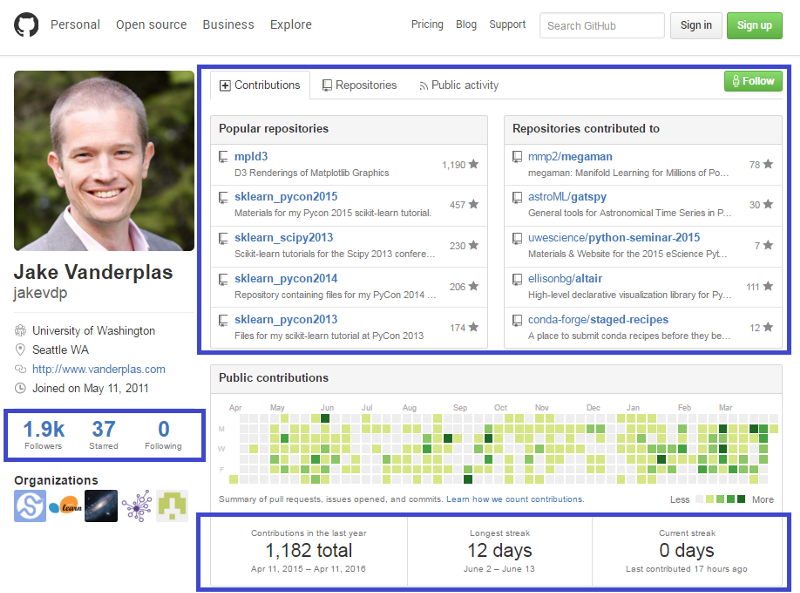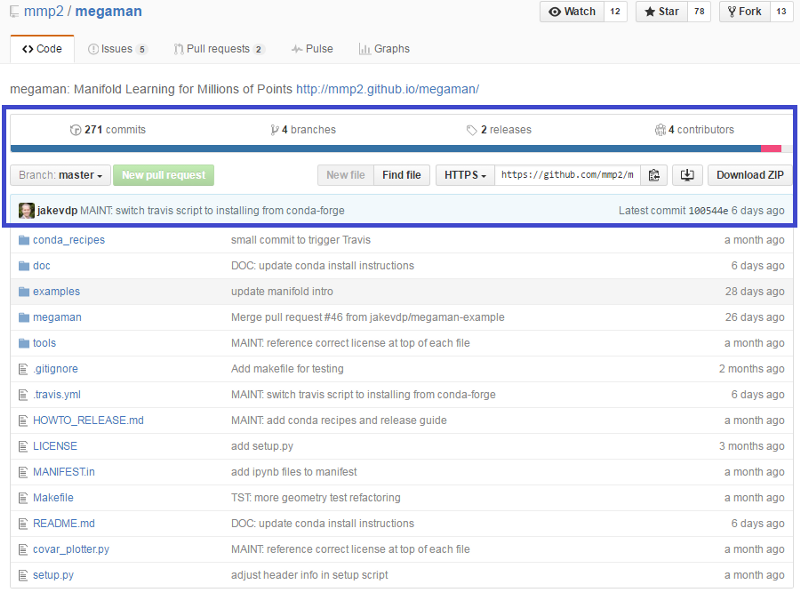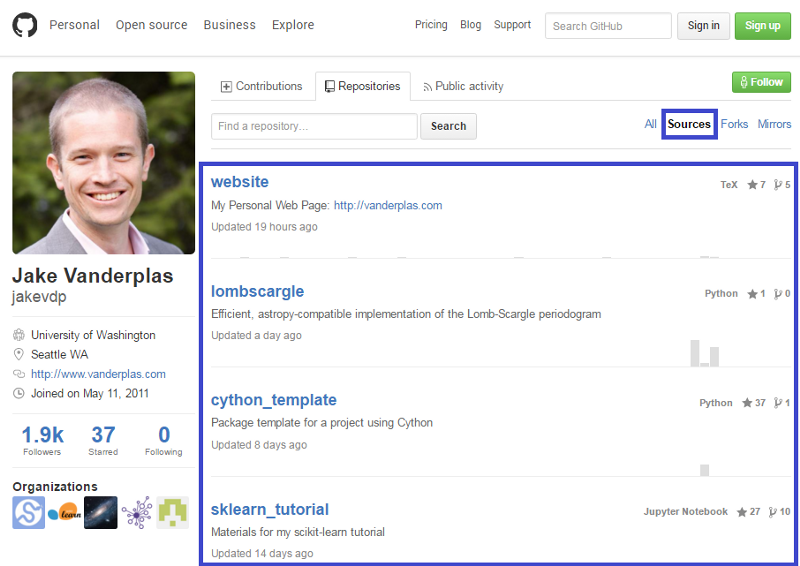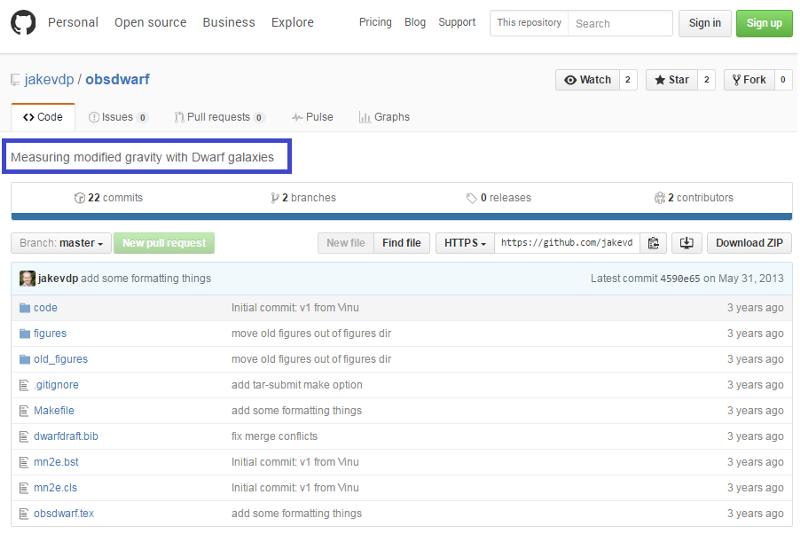How do software companies and startups use GitHub to hire developers? According to a study at Carnegie Mellon University, employers looked for ‘activity signals’ that inferred passion for coding and a certain level of technical competency. Recruiters also evaluated soft skills, like project management and team collaboration, from user interactions with the open-source (OS) community. So how do you navigate through all those projects, requests, and commits? Start by looking for these five categories when reviewing (or creating) a GitHub profile:
5 GitHub Stats Hiring Managers Look For
December 13th, 2016 by lewis
Tweet
“When it comes to hiring, I’ll take a GitHub commit log over a resume any day.” — John Resig, creator of jQuery library
1. Active Participation in OS Projects
“If they’ve devoted time to this OS project, that’s a good indicator that they’re in [computer science] for the right reasons…They’re doing something because they want to give back to their community.”
GitHub is the largest social coding website in the world, with more than 12 million users and 31 million repositories. The site allows developers to share their own OS projects and contribute to the code of other projects. Each developer profile also has a log of user activity that includes project contributions, original (“sourced) and copied (“forked”) repositories, and number of followers.

A majority of employers valued users who had committed to an OS project since “active involvement in the open source community was a signal of the candidate’s selflessness and honesty.” Recent and frequent contributions to public projects were favored, while hosting forked repositories were not. Employers reported this signal as one of the most reliable indicators when assessing collaboration skills and potential fit in the company.
2. Contributions Accepted to High Status Projects
“Seeing that he had commits to jQuery, was filing tickets with jQuery, and I know that’s a prestigious project to work on…Just by looking at his code, if nothing else seeing that it was being merged downstream into jQuery, I recognized that has demonstrated some level of proficiency”
GitHub profiles were also reviewed to determine the technical skills of candidates. Accepted contributions to reputable projects were highly regarded since they inferred a ‘seal of approval’ or referral from experienced developers in the community. It is important to note that ‘high status’ projects were based on each employer’s knowledge of the GitHub community and not on the number of project followers (“watchers”).

Employers favored this indicator since “pull requests” and “commits” to third-party projects validated a candidate’s skills and reduced the need for additional assessments. Committing to a particular project also highlighted a developer’s coding expertise and indicated proficiency in a programming language.
3. Project Ownership
“I don’t think you can use it as a sole way to judge someone…But if something is up there, it’s definitely a huge plus and probably one of the first things we look for — are they sharing their source code?”
The ability to start a project and manage the project’s community was also a evaluated by employers. Project ownership required “setting design direction, managing incoming code contributions and patches, and interacting with potential collaborators.”

Employers determined that a GitHub profile with successful projects inferred skills in project management. In addition to technical skills, project ownership also highlighted long-term design capabilities and collaboration styles.
4. Side Projects
“A lot of us spend our weekends working on [project name] so we want to work with people who are motivated to not just work on the code they’ve been assigned but to work on projects outside their job. It just shows a general excitement for the space and that’s what we want to find — people that are really engaged”
Employers also categorized projects into work-related repositories and non-work related side projects. Side projects inferred a genuine passion for software development and potential for success in the company.

Employers viewed a candidate’s willingness to code during their free time as a commitment to learning and career development, as well as an indicator of company culture fit. Developers who exhibited enthusiasm for coding through side projects were also deemed more likely to “show initiative and entrepreneurship in their work.”
5. Number of watchers and forks of projects
“You can see if a lot of people have watched and forked and that’s a good thing, but it kind of depends on how good a marketer that person was as well on GitHub.”
Some employers assessed the popularity of a candidate’s repository by noting the total number of watchers and forks. However, a majority of employers deemed the signal as too unreliable since self-promotion could be used to ‘game’ the system.

Instead of relying on the number of watchers or forks, employers evaluated the code of a project that had the most commits. From this code, the employer could infer the developer’s technical proficiency and design approach.
The study concluded that employers valued easily verifiable and reliable measures on a GitHub profile, such as frequency of user activity and project ownership. Reliable signals that were harder to interpret, like quality of code and side projects, were not always preferred due to time and assessment constraints.
Sourcing a candidate always requires significant investment from a hiring manager, and finding a great developer is no different. We hope that this intro guide will help you find the best candidate when looking to fill that important developer role.
Source
Marlow, J., & Dabbish, L. Activity traces and signals in software developer recruitment and hiring. In Proc. CSCW, (2013), 145–156. http://dx.doi.org/10.1145/2441776.2441794.
If you liked this article, let us know by clicking Like.